I got a question in a contest(which is ended weeks ago). The question as I interpreted was -:
Given an undirected acyclic graph which is connected by (N-1) edges and N nodes. The graph is guaranteed to be connected. Given two nodes u and v, you have to find two nodes x and y of the graph such that the path between these two nodes overlaps the path between the given cities u and v completely and gcd(x, y) is maximum possible.
Constraints
1 <= N <= 5 * 10^5
1 <= a,b,u,v <= N
where a,b are the two arbitrary nodes in the graph.
Example let the graph has 10 nodes (1 to 10)
Now in preceeding line I will give two integers a and b which means a and b are directly connected.
1 4
1 5
1 2
4 3
4 6
5 7
2 10
2 9
2 8
At last u v 4 2
Ans - 4
The path from u to v is 4 -> 1 -> 2
Now, some of the paths which completely ovelaps the path from u to v are:
4 -> 1 -> 2 -> 10
3 -> 4 -> 1 -> 2 -> 9
4 -> 1 -> 2 -> 8
and so on....
Note that, selecting the path from 4 to 8 completely overlaps path u to v and also gcd(4,8) = 4 which is the maximum possible.
The graph is :
https://i.stack.imgur.com/Phkwi.png
 Time Limit: 3.0 sec
Time Limit: 3.0 sec
My approach for solving the problem was :
Find the path from each node to every other node and store it in list of arrays.
Iterate over all lists and find whether u and v path is contained in the array.
If the path is found and calculate the gcd of starting and ending node and check for the max gcd.
However I think my approach is too brute force and code is too long and I think it has too much complexity.
Can anyone suggest any suggestion or approach to tackle this question?